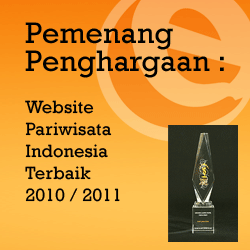Trowulan Remains of an Empire

Trowulan today is a small village on the plains to the south west of Surabaya, not far from Mojokerto. Archaeological excavations, supported by classical literature, have revealed that this was almost certainly the site of the ancient capital of Majapahit, Java's largest and most famous imperial court.
During the last few years, teams of archaeologists have been busy uncovering and, where possible, restoring the remains of this important historical site. Most of the buildings, which were made from a reddish brick, have of course long since collapsed, but some of the larger structures have at least partially survived and are at present undergoing reconstruction.
Some of Trowulan's more important remains include the gateway of Bajang Ratu, recently restored; the bathing place Candi Tikus; Candi Brahu, where it is said the cremations of several of Majapahit's rulers were carried out; the Kolam Segaran, a large artificial lake in the centre of the capital; the tomb of the 'princess from Campa', Candi Menak Jinggo, Candi Sumur Upas, as well as the split gateway Wringin Lawang, which is believed to have been the entrance to the palace of the famous prime minister Gajah Mada himself.
Trowulan also has a large new museum, which has recently been extended to include the collection of sculpture and artifacts which used to be housed in the museum of the Archaeological Service in Mojokerto.









